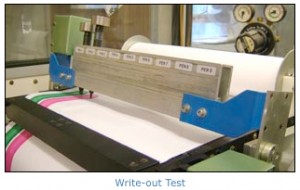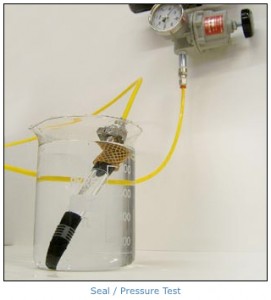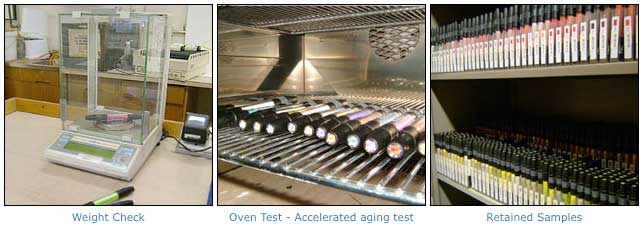To the consumer, most manufactured products are just practical, everyday items for general use and consumption. But all manufacturers know that behind this perception lies an attention to detail that must be sustained millions of times a year.
In this respect, TRIA markers are no different. On the surface just a marker, but underneath lies considerable technology with tolerances sensitive to 1000th of a millimeter.
Quality starts with the suppliers of Letraset’s raw materials.
Letraset encourages its suppliers to use the same procedures as theirs. These follow military standard 105E, equivalent to civilian counterparts ANSI/ASQC Z 1.4, ISO 2859 and BS6001 (some countries have their own national comparable systems).
On arrival, components and finished pens go through more than 50 tests to maintain consistent quality levels. Most important is that the parts meet the very strict dimensional tolerances required. This is achieved by sampling component batches and routinely checking with ‘go/no-go’ gauges.
Each part has its own engineered gauge and individual cavity checks are routinely examined.
 Certain components such as nibs and ink transorbs require additional measurements carried out on specialized equipment. Nibs are routinely checked on a piece of equipment called a ‘Shadowgraph’ which allows tiny imperfections to be identified and measured.
Certain components such as nibs and ink transorbs require additional measurements carried out on specialized equipment. Nibs are routinely checked on a piece of equipment called a ‘Shadowgraph’ which allows tiny imperfections to be identified and measured.
 Ink transorbs are surface printed and require high external sleeve opacity to avoid visual contamination from the ink inside (this often has a higher contrast value). Letraset uses a ‘Macbeth’ opacity test monitor to complete this task.
Ink transorbs are surface printed and require high external sleeve opacity to avoid visual contamination from the ink inside (this often has a higher contrast value). Letraset uses a ‘Macbeth’ opacity test monitor to complete this task.
 Letraset’s markers are well known for the quality of their nibs. To evaluate lifespan and wear, pens are routinely checked by completing a full ‘write-out’ test which exhausts the pen and puts the nibs under constant strain and stress.
Letraset’s markers are well known for the quality of their nibs. To evaluate lifespan and wear, pens are routinely checked by completing a full ‘write-out’ test which exhausts the pen and puts the nibs under constant strain and stress.
 Letraset has devised a range of its own tests to check very specific requirements for the TRIA marker. Most important of these is a seal test, a simple test whereby the assembled marker is put under pressure in a beaker of water to check for leaks.
Letraset has devised a range of its own tests to check very specific requirements for the TRIA marker. Most important of these is a seal test, a simple test whereby the assembled marker is put under pressure in a beaker of water to check for leaks.
Some parts are also checked for structural integrity by putting them under a strain test.
Only once components are approved are they fed onto the production machine and have their batch reference numbers related back to the production run. During production, pens are examined at random to check fit and cosmetic appearance. At the end of the production run all pens are check weighed.



